Youth who age out of the foster care system face myriad challenges associated with family instability and poverty. They often lack basic life skills or the support network needed to transition to adulthood.
Seven out of 10 girls who age out of the foster care system will become pregnant before the age of 21, according to the National Foster Youth Institute. Youth Today spent time with two women in New Mexico who were in foster care as youth as they reflect on their own childhoods in the system and their hopes for their children.
Alyssa
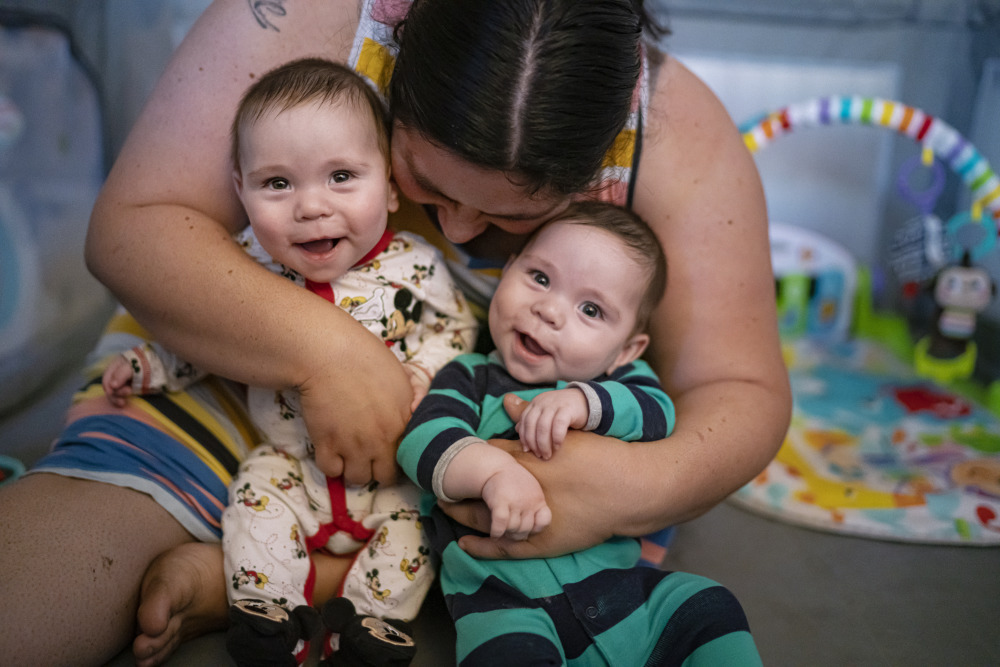
Alyssa Davis, 24, snuggles with her two eight-month-old identical twin sons, Samuel and Dean, while her eldest son, Zeppelin, four, naps in his bedroom. Davis is a former foster youth from New Mexico who spent 12 years in the system before aging out at age 18. Life was full of instability with 30 different foster homes and 12 different schools over the years.
“Moving around so much, there’s no time for you to go to school and learn,” says Davis.
Foster life was often chaotic. In many homes, Davis says she and other foster children were “stacked” in triple bunk beds or made to sleep on couches, pads on the floor, or even in shared beds, which is illegal.
“They get $650 for each kid that you have,” says Davis of foster parents.
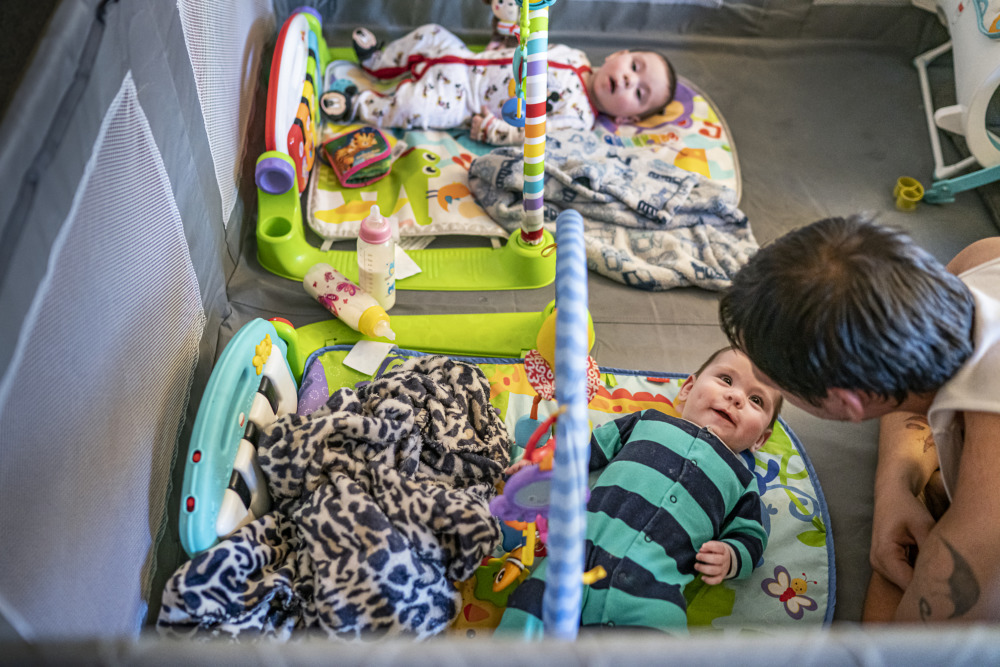
Davis’s husband checks in with the twins at their home in Albuquerque. The twins, Samuel and Dean, lay in the couple’s living room, below a set of matching mobiles. The carpeted floor of the three-bedroom apartment is covered with toys — stuffed animals, plush blankets and toy cars — including a fire truck with a working hose.
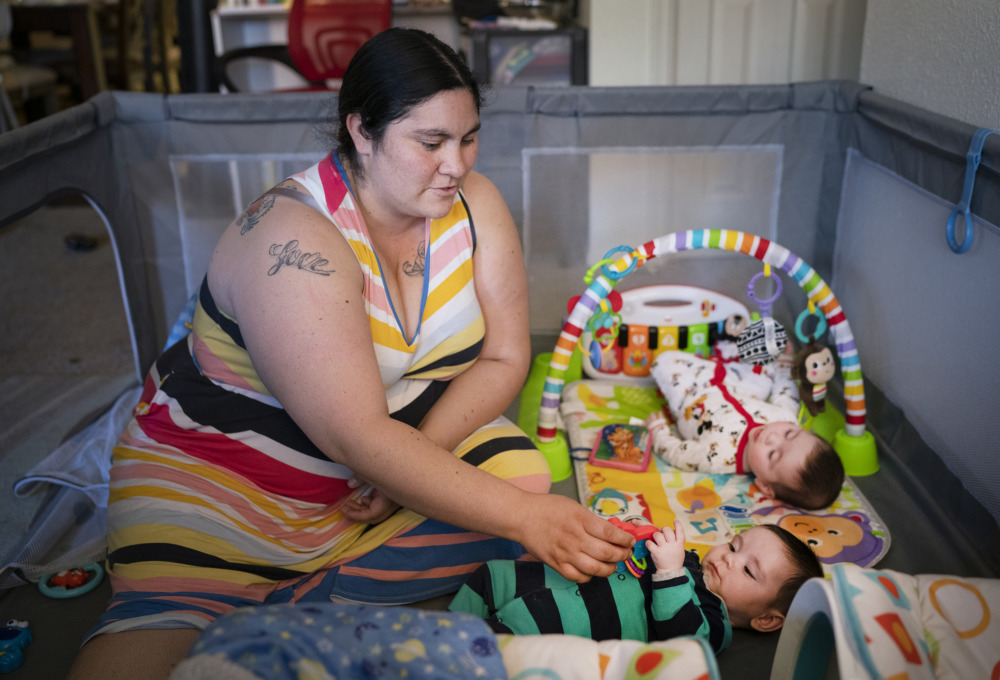
Davis plays with her twins at their home in Albuquerque. Davis is a Youth Advocate for NMCAN. Through her work with NMCAN, Davis has advocated for the foster youth tax credit, expansion of the tuition waiver for foster youth, and the Fostering Connections Act, which extends support for young people ages 18-21. Davis was not eligible for extended foster care when she aged out.
A study by Child Trends found a clear association between extended care and better youth outcomes in terms of employment, education, rates of homeless and the likelihood of early pregnancy and parenthood.
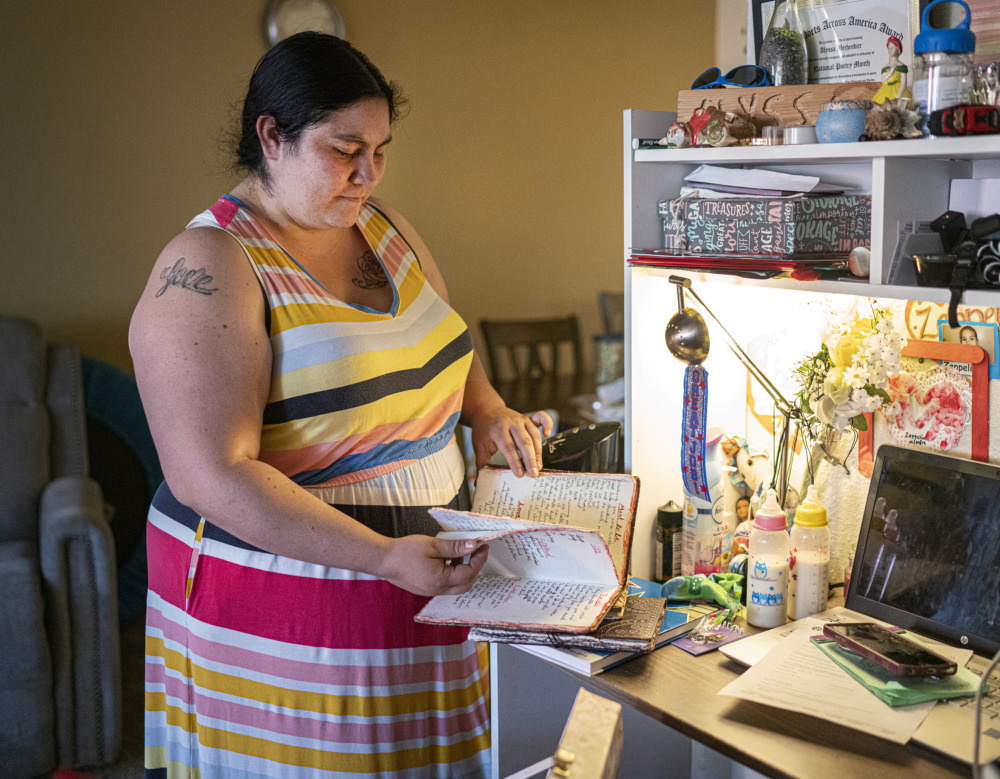
Davis, a published poet, looks through a collection of her poetry from 2010-2014. She began writing when she entered the foster system as a young child. She could usually find a pen and would scribble rhymes on tissues, small pieces of paper, whatever she could find.
“They started as small silly things,” she says, that evolved into reflective and, at times, heart-wrenching poems reflecting the pain of foster life.
“Remembering the sadness on mothers’ faces as their children cried for them, but stripped away,” Davis reads from one of her leather-bound books, filled front to back with poems and drawings from classmates.
“Particular moments pop into my mind when I see that,” she says.
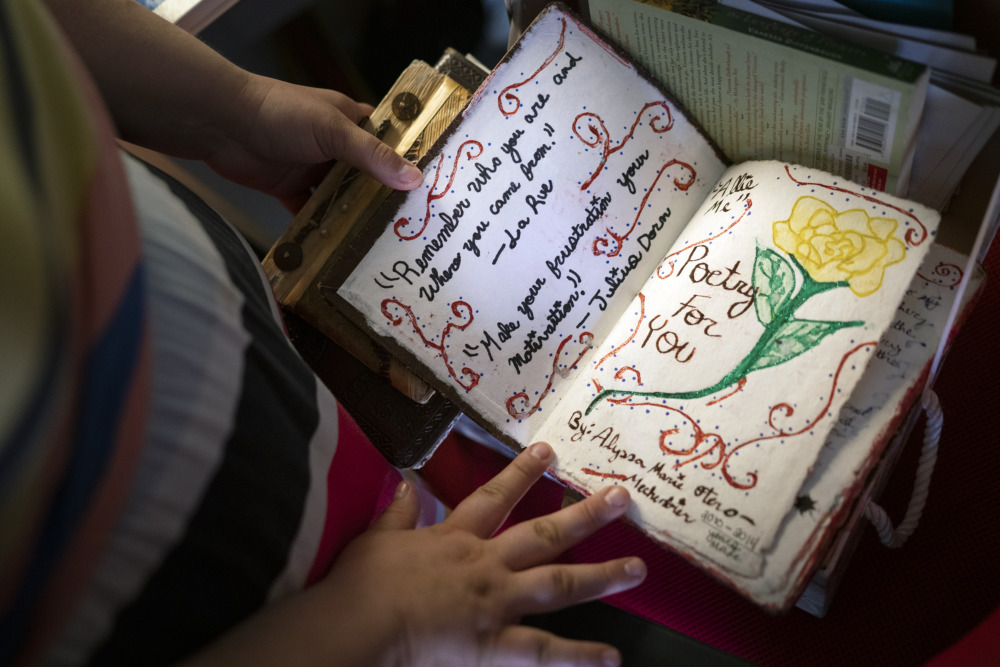
A look into one of Davis’ collections of poetry from her youth.
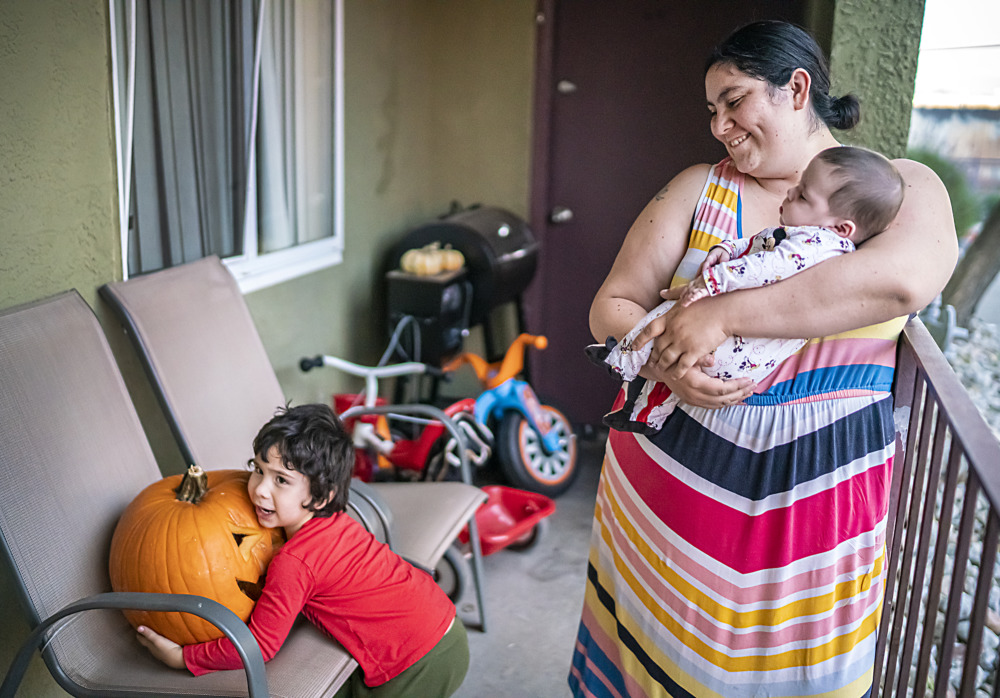
Davis, Samuel, and Zeppelin outside their apartment days after Halloween.
Davis had Zeppelin not long after she aged out of foster care. At the time, New Mexico had no extended care to support those aging out.
“It would’ve been really nice just because I wouldn’t have had to worry about housing,” says Davis, who worked numerous jobs as she pursued her high school diploma. “I wish I could have prioritized education, but I was busy trying to survive.”
On her 18th birthday, she moved into her own home. She was frightened and couldn’t sleep well.
“It just felt weird and very lonely,” says Davis. “I was very lonely for a long time there.”
Davis, like many 18-year-olds, lacked basic adult skills. Unlike most of her peers, she had no support system to help soften the transition into adulthood. She had never been taught to drive and had to learn to navigate the bus system as a young woman living in a rough part of Albuquerque.
“That was scary. I got lost a lot of the time,” she recalls.
Davis says she rarely had a working phone and had never learned to cook. Budgeting or managing money was utterly foreign to her. She built up credit card debt and broke a lease that cost her and the other tenants — all former foster youth — four thousand dollars.
“These are things we were never taught,” says Davis.
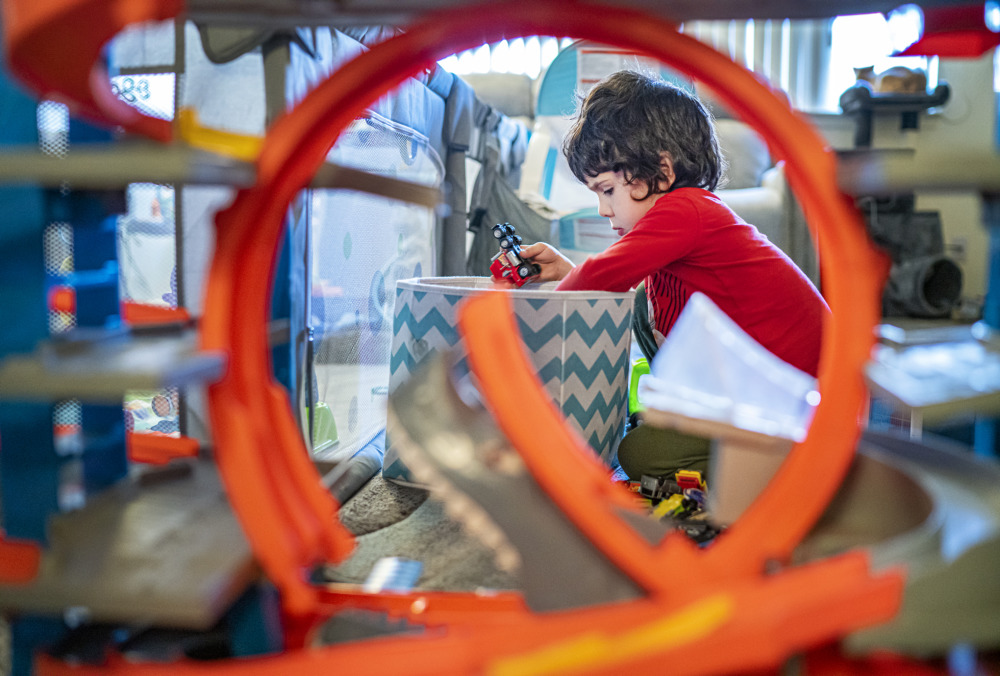
Davis’ son Zeppelin searches through a basket of toy cars and trucks looking for the perfect vehicle for his race track.
As a foster youth, Davis got used to having nothing. She is making sure that her children will not experience that.
Davis budgets the entire year in spring after she and her husband get their tax return. She places funds in envelopes marked “Christmas,” “Zeppelin’s birthday,” and other important dates. She looks up events of the year, such as the Christmas tree lighting, the Balloon Fiesta, and the Day of the Dead Parade, and budgets for them, including snacks for the whole family.
Joanna
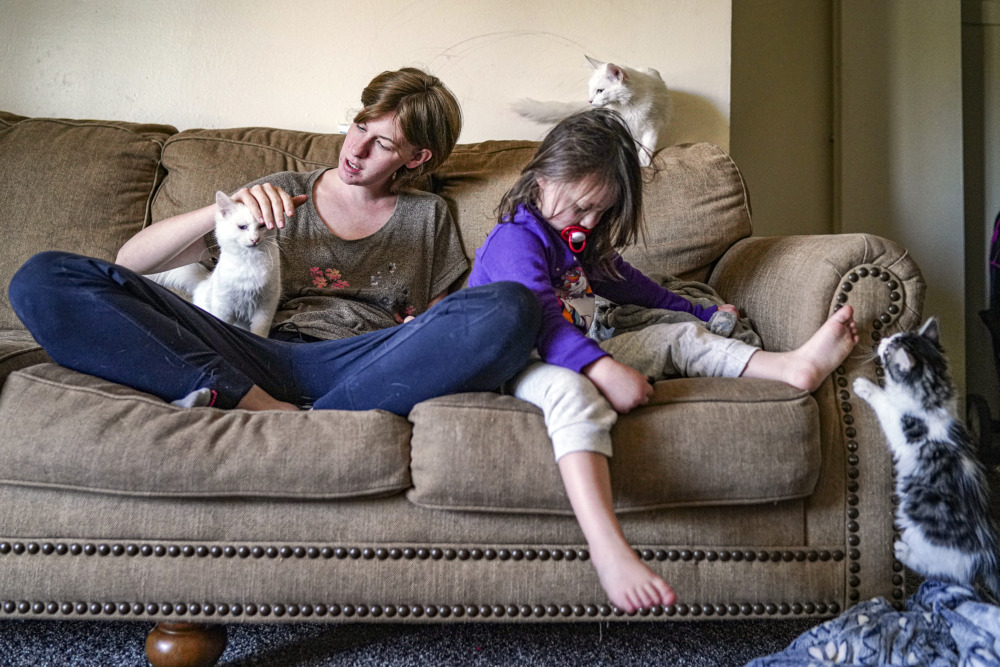
Joanna Delaney sits on her couch with her daughter, Violet, three, and three of their many cats. Delaney, a foster youth from Albuquerque, has always loved animals. Their presence helps create a sense of comfort for Delaney, who grew up in a family of nine.
‘They give me a reason to get up, get going, and do stuff,” she says.
Delaney, 22, a mother of two, was briefly put into foster care as a toddler and again at age 17 when she entered New Day Transitional Living Program, a program that provides support and housing to homeless and system-impacted youth. She felt isolated and depressed in her own apartment. She wanted a cat to help her cope, but that was not allowed.
“I was really lonely and wasn’t allowed to have anything with me to make my transition easier,” says Delaney. “I grew up with seven siblings in my house and two parents. I was never alone. The quiet was too much for me.”
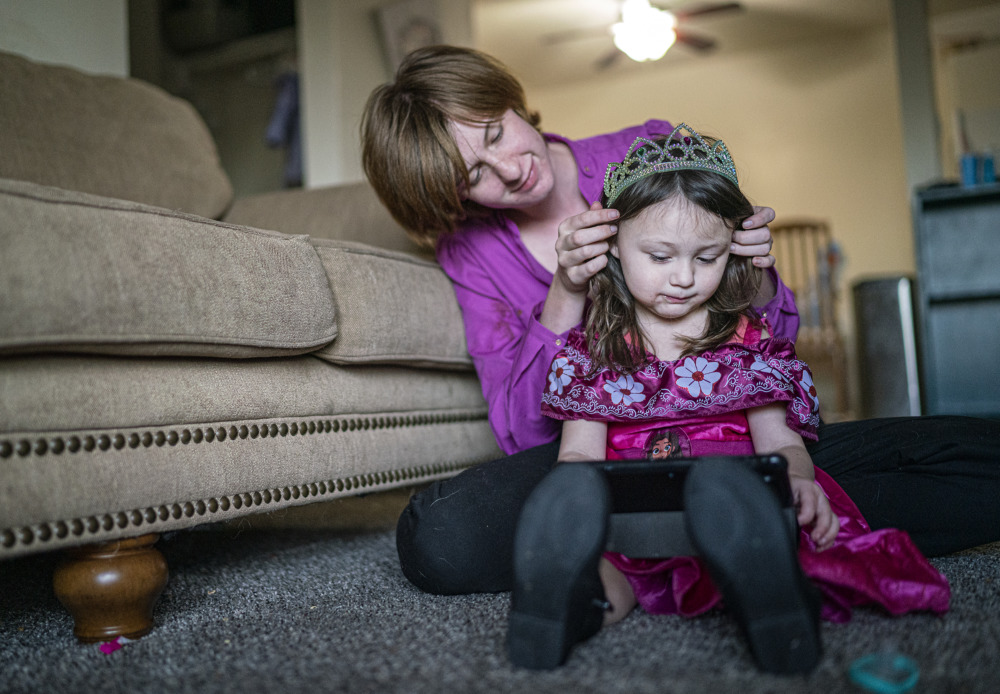
Delaney adjusts the tiara on her daughter Violet’s head to complete her flowered princess outfit for Halloween at their apartment in Albuquerque.
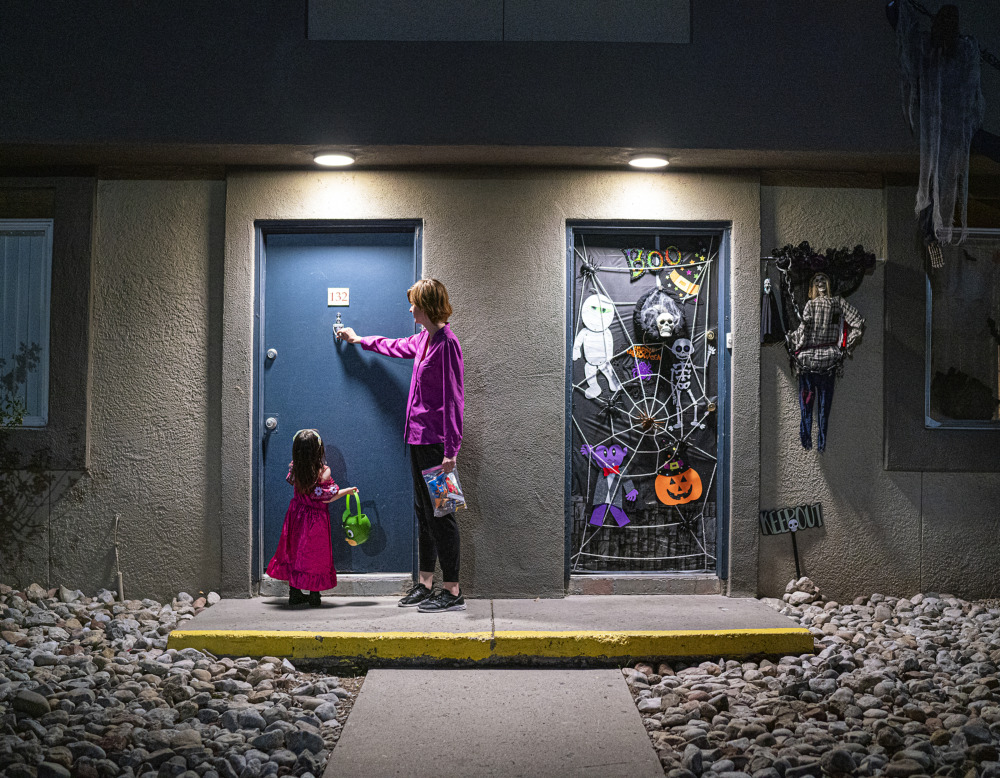
Delaney knocks on the door of a neighbor while trick or treating with her daughter Violet at their apartment complex in Albuquerque on Halloween night.
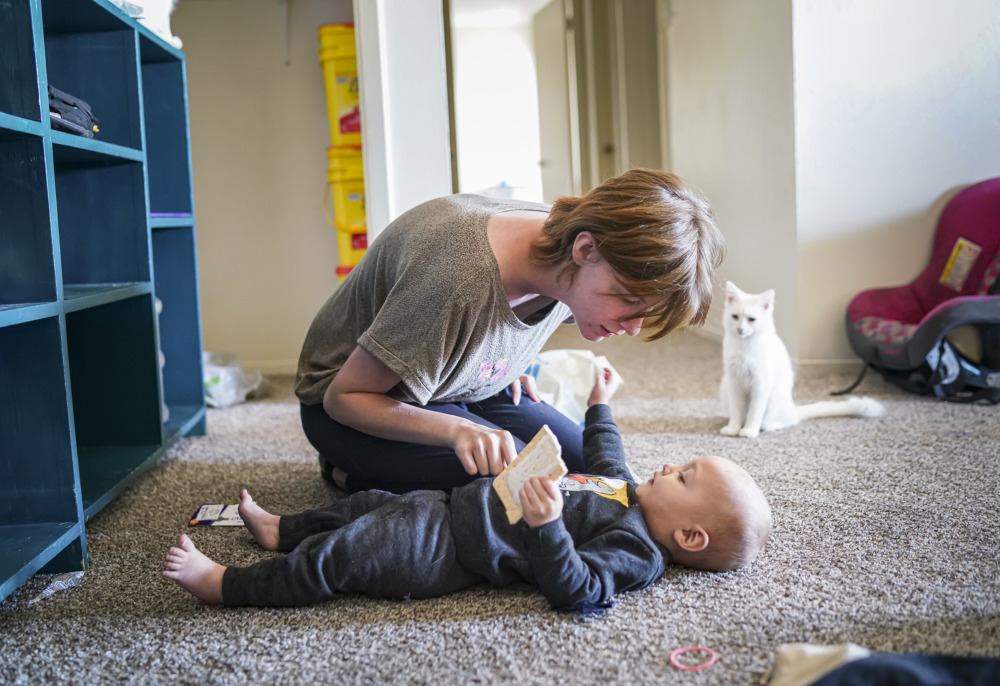
Delaney looks down and speaks gently to her one-year-old son, Orion, in their apartment in Albuquerque. At age 18, Delaney left the Transitional Living Program after meeting a boyfriend. After a period of transitional housing and homelessness, the two moved into an apartment. Soon after, she got pregnant.
“It’s very quickly that people that were in foster care have their own kids,” says Delaney. “They don’t have a family growing up, so typically, what I have noticed, they try to recreate a family setting immediately. They crave it.”
She says her ex was a troubled young man and became abusive as the relationship progressed (they are no longer together). According to Delaney, he had 36 different foster homes and placements growing up and had mental health issues rooted in his experiences in the system.
“I don’t know anyone coming out of foster care that hasn’t experienced some really terrible stuff,” she says.
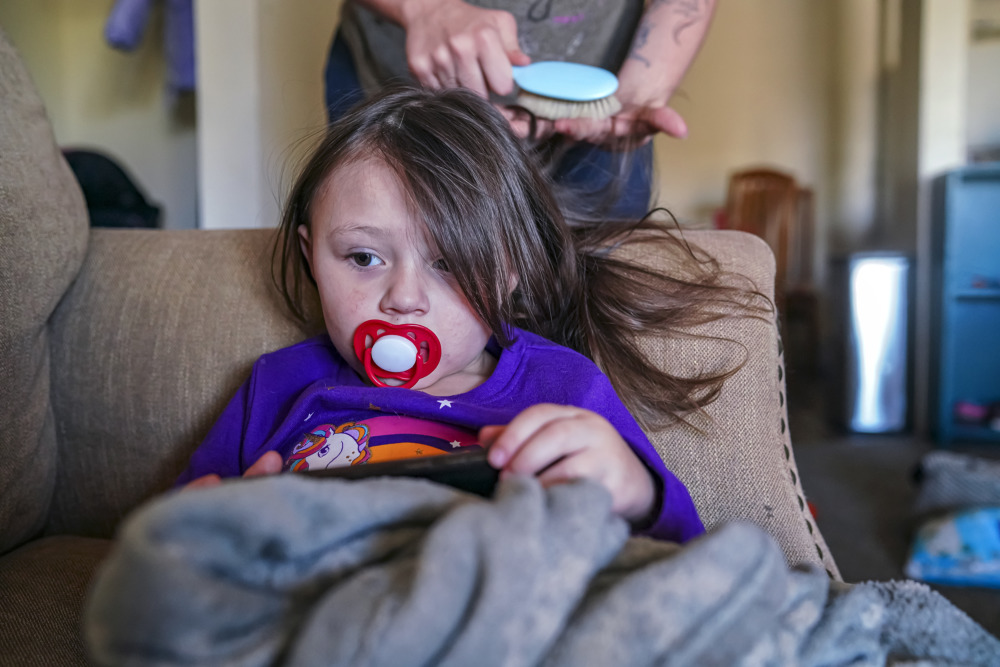
Delaney gently brushes her daughter Violet’s hair with a soft brush.
“She hates the other one,” says Delaney, referring to the hard bristles of another brush.
Like many skills associated with motherhood, learning to brush her daughter’s hair was new to Delaney.
“Like, my parents never taught me how to brush my hair, take care of myself, take a shower. So that’s an everyday struggle for me,” says Delaney
According to Delaney, the foster system, including extended care, did not provide adequate parenting guidance for her with the basic skills of adulthood.
“In foster care, they don’t teach you how to cook, how to shop — they don’t teach you much of anything,” she adds. “So you don’t really have the skills you would get having parents to teach you that.”
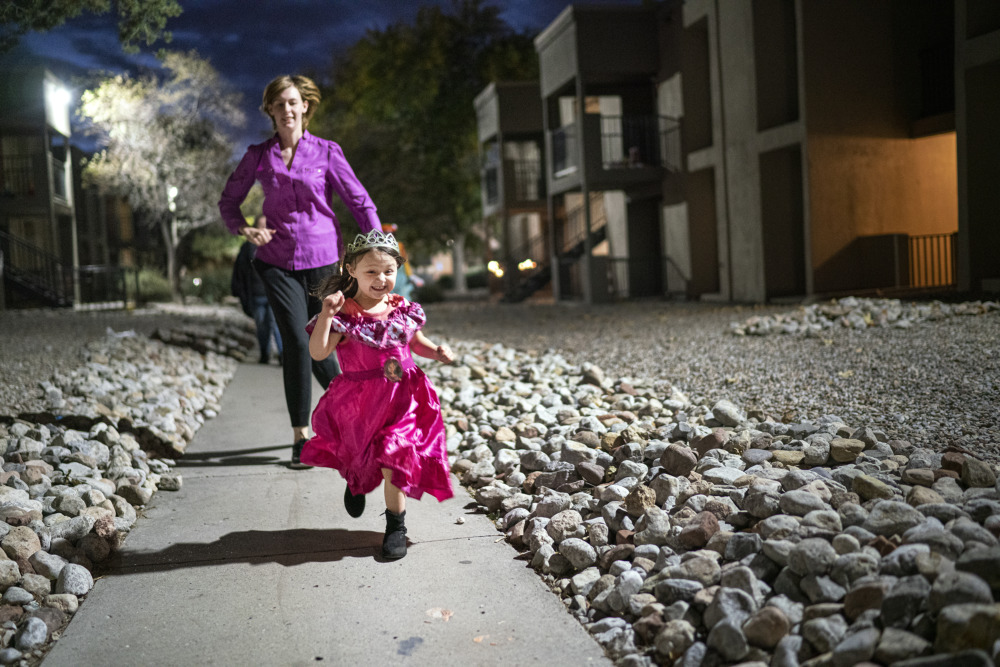
Delaney chases after her daughter Violet as they trick-or-treat in their apartment complex on Halloween night in Albuquerque.































